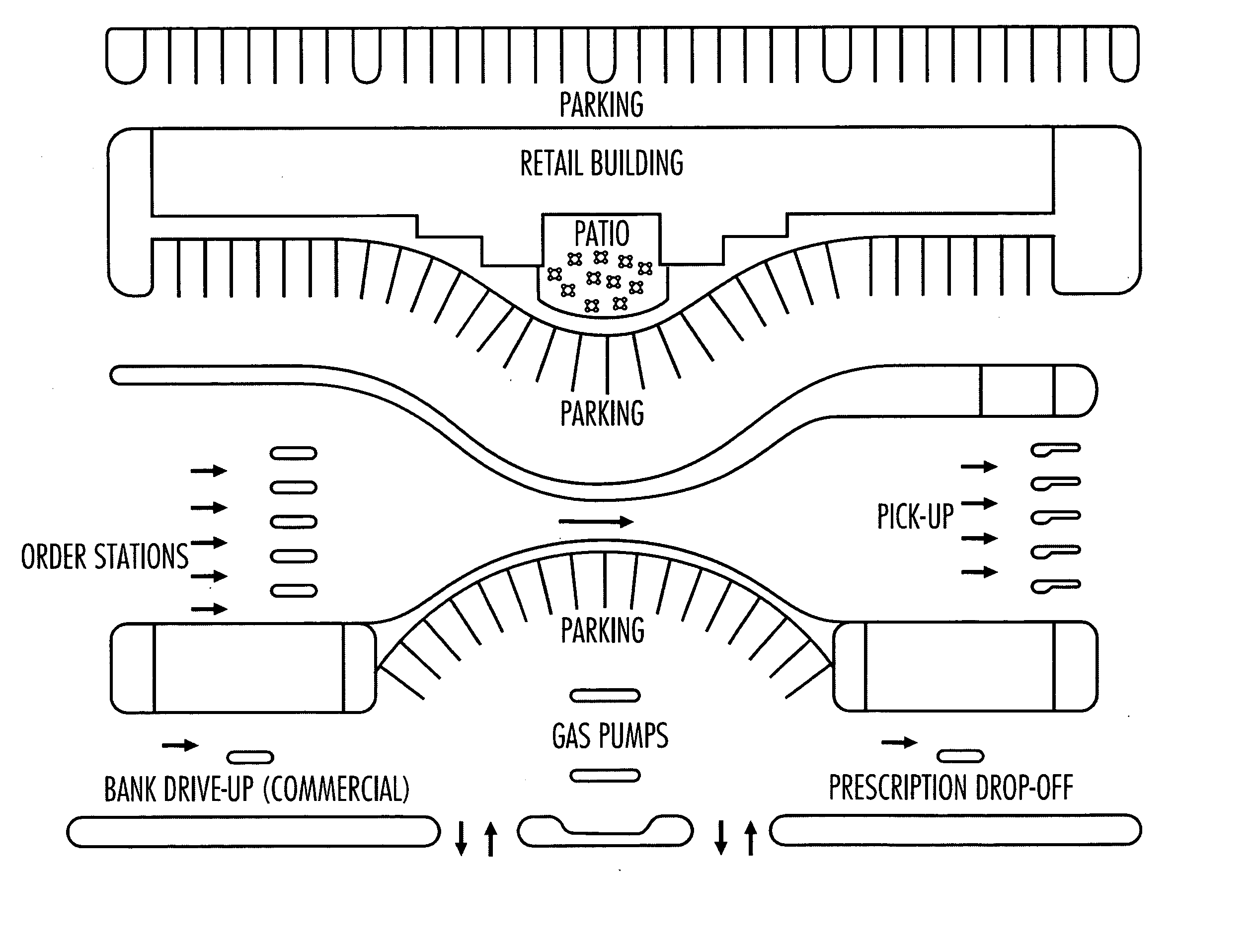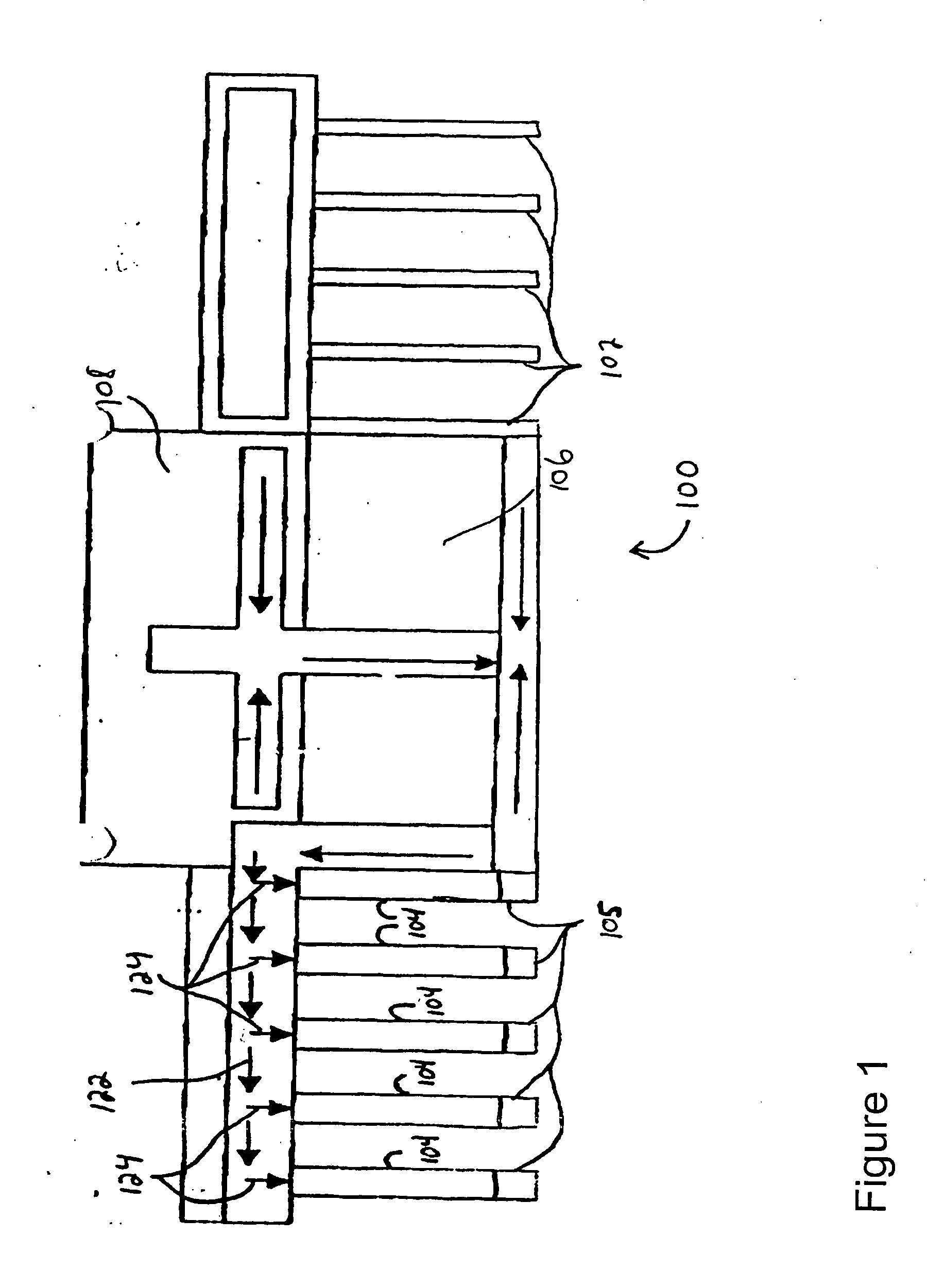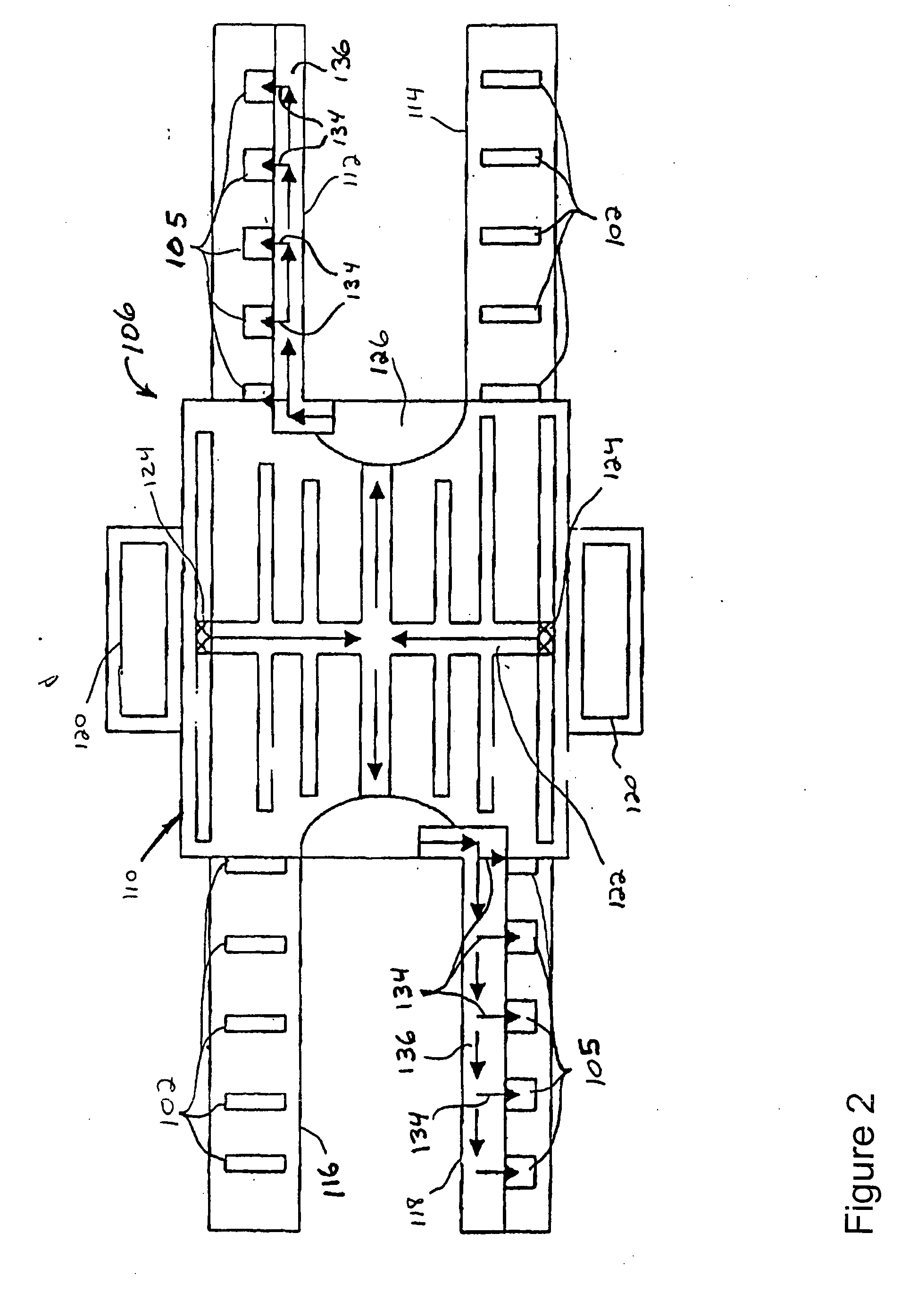These efforts have had some limited success but still fall short of providing consumers optimum convenience and efficiency.
Such efforts must also focus on the demand for competitive pricing, as providers of products and services are limited as to what they can provide to the
consumer to save them both time and money.
In these hubs, it is still impossible for a
consumer to make a single purchase from a vendor that includes products or services from the variety of local retail hub stores available in the hub.
There are distinct disadvantages with this approach.
For example, when only one vehicle can be waited on at a time, a waiting line forms, slowing down the service and causing an inconvenient wait.
Moreover, the drive-thru / drive-up portals are generally designed as add on stations that have secondary importance to walk-in service and thus, the building or facility structure is not configured for efficient vehicle drive-thru / drive-up service.
In addition, current vehicle drive-thru / drive-up structures typically provide single category goods, such as a single location for drive-thru prepared
fast foods, a single location for drive-thru pharmaceuticals, photos,
dry cleaning, liquor, banking, limited convenience items, and singular product lines, all locations which are limited in available product width and depth.
The limited product availability and product variety is also a result of current structural configurations which typically cannot accommodate a wide variety and scope of products.
Further,
order processing is generally singular in nature and limited to a few items due to the time it would take to complete and process the
customer order under known structural configurations.
A substantial
disadvantage to expansion of product line end number or items available to current drive-thru facilities is the resulting proportionally
reduced order processing speed.
The limited product availability to the customer makes it necessary for the customer (if seeking the convenience of drive-thru / drive-up service) to drive to several locations that specialize in various items.
This
disadvantage results in
lost time to the patron, as well as the added cost of traveling from location to location to obtain the desired products or services.
Although this method provides the
consumer with some convenience, there are still many disadvantages with this form of shopping.
Further, even if a consumer desires this method of
order processing, there may be problems in the delivery (e.g., wrong delivery times, incorrect delivery addresses, forgotten delivery times, and unforeseen delays).
Moreover, the current
parcel delivery business typically retains a huge amount of parcels because no one is home to sign and accept the delivery.
However, the cost of direct e-commerce
parcel delivery or shipping to a consumer's home is expensive and is usually directly passed on to the customer through shipping and handling charges.
Product returns add even more cost and time for the customer.
Moreover, a majority of parcels are delivered during the weekday when the customer is not at home, and often, the parcel will not be delivered unless the customer signs for the
package.
Another
disadvantage relative to direct e-commerce delivery is that if the parcel is delivered and placed on the consumer's doorstep or other insecure location, the parcel is subject to weather and environmental conditions, or theft and vandalism.
Additionally, while
purchasing goods or services through
the Internet offers convenience to the consumer, it can result in poor service in detail interactions between vendor and customer.
Also, such purchases suffer from the same delivery obstacles as the phone / catalog sales vendors.
The limitations of the self powered trolley type of
delivery system makes it completely useless for systems requiring high speed
material handling technologies which have the capacity to rapidly
handle and carry items of differing sizes and weights.
However, this disclosure is limited in that it fails to disclose individual ordering and delivery stations being staged at different multiple configurable locations within and around the facility which facilitates faster movement of goods (and hence, higher volume of purchases).
This disclosure is also deficient in that it only discloses the dispensing of limited items that can be dispensed through an open vehicle window so that in most cases, it is intended for the driver to get out of the vehicle to load the order in the
trunk or backseat or other
storage area depending on
vehicle type.
As such, this disclosure fails to take into account order delivery of products having a variety of sized and / or quantities.
The customer, however, still has to leave their vehicle to retrieve the video.
Also, there is no way for the customer to expand the cassette
product order being picked up into other product types or sizes, and there is no other non-similar products available for ordering under this disclosure.
This disclosure has a very limited
product selection due to the small size of the facility which is similar to a small convenience or gas store.
Moreover, the size of the dispensing chutes restricts the sizes of the products which may be sold by the vendor.
This disclosure also fails to disclose on-line ordering over a
computer network.
This disclosure is deficient because there is a limitation on the number of vehicles that can be serviced from a single configuration.
This disclosure is deficient because it requires multiple stops for a consumer, and potential repeated payments by a consumer, which is not convenient.
This patent fails to disclose a process that allows a consumer to purchase multiple items or services (e.g., banking, movie rental, liquor,
pharmacy, grocery) from multiple retail vendors in a single location.
Additionally, this disclosure fails to appreciate the need for automated
pickup stations which are controlled or operated by
software systems designed to optimize
traffic flow based on the items ordered, and the items in process.
Moreover, this disclosure is deficient because it relies on an offsite remote location to receive specific commands through a touch-tone keypad, which removes the customer from phonetically communicating with a live attendant who can provide great interaction to the consumer with exceptional service.
This disclosure also fails to appreciate the ability to offer additional items to a consumer which are not stored at the facility.
Because of this setting, this disclosure will fail to accommodate consumer orders which require a large
product selection or bulk ordering capability.
Further, this disclosure is deficient because it relies on oral
voice communication to place the order.
Additionally, this disclosure'
s system of selling fuel and non-fuel items is in a retail setting is not suited to receive courier parcels on behalf of the customer, nor does this
system offer mailing, shipping or even banking as a service.
And, this disclosure fails to recognize that consumers would embrace
purchasing items from a plurality of various pre-selected vendors, all offering their products in one drive-thru facility that allows the customer to order and receive the products right at their vehicle.
 Login to View More
Login to View More  Login to View More
Login to View More 


